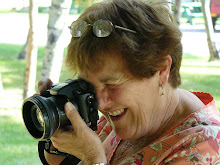
Around where I live we have two kinds of deer. Mule deer and white tails.
There are several reliable ways to distinguish mule deer from whitetails:
1. Mule deer have bigger ears. That's how they got their name.
2. When they run, mule deer do not bound like whitetails. They jump up and land with all four legs leaving and hitting the ground at the same time. It's called "stotting." It's thought to help them see danger at a distance in brushy country.
3. Mule deer do not flag with their tails when they run, while whitetails show those big, fluffy, white tails for all to be seen like billboards, and they bound gracefully when they are spooked. Mule deer do flag, but their tails are small and they stott.
This is my painting of a mule deer. We often see them close to our home and I have taken many photographs of mule deer. My challenge was to be able to show the fleshy soft ears of a mule deer. So for this painting I used the ‘rough’ side of my Canson paper, which allowed me to play with the texture of the ears.
Though I am not know for putting details into the background of my paintings, in my last two paintings I have tried to give a sense of the environment without overpowering the subject.
There are several reliable ways to distinguish mule deer from whitetails:
1. Mule deer have bigger ears. That's how they got their name.
2. When they run, mule deer do not bound like whitetails. They jump up and land with all four legs leaving and hitting the ground at the same time. It's called "stotting." It's thought to help them see danger at a distance in brushy country.
3. Mule deer do not flag with their tails when they run, while whitetails show those big, fluffy, white tails for all to be seen like billboards, and they bound gracefully when they are spooked. Mule deer do flag, but their tails are small and they stott.
This is my painting of a mule deer. We often see them close to our home and I have taken many photographs of mule deer. My challenge was to be able to show the fleshy soft ears of a mule deer. So for this painting I used the ‘rough’ side of my Canson paper, which allowed me to play with the texture of the ears.
Though I am not know for putting details into the background of my paintings, in my last two paintings I have tried to give a sense of the environment without overpowering the subject.
For Sale 61 x 46 cm Backed and Matt but Unframed US $250.



